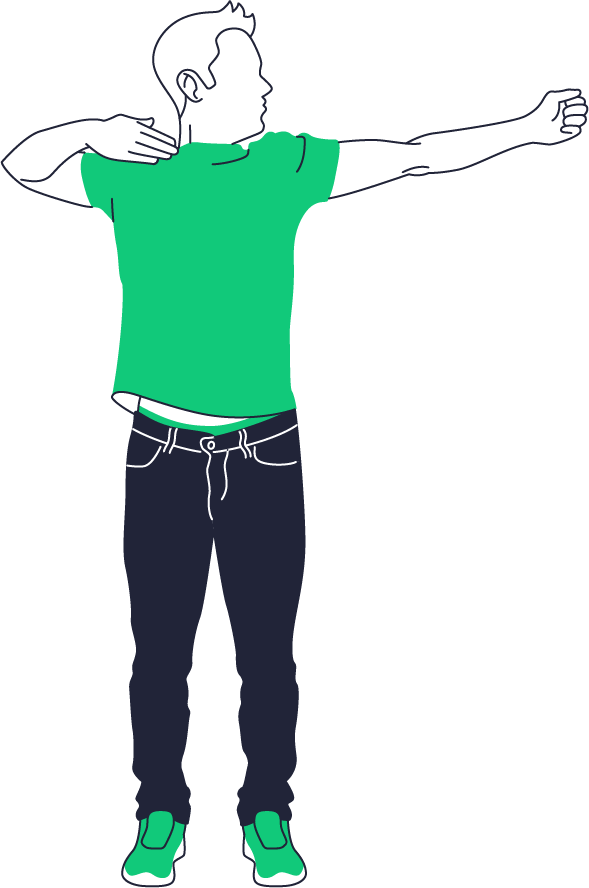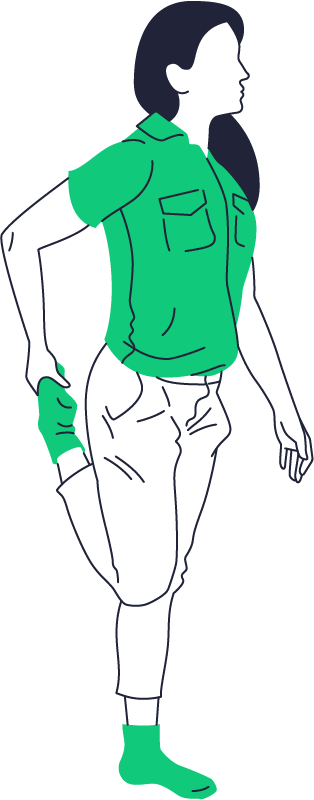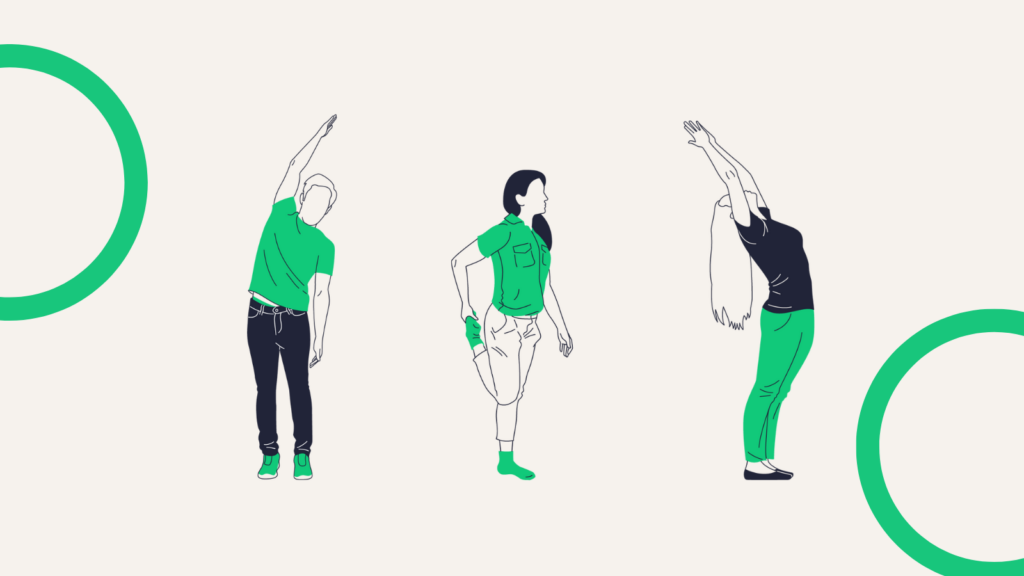Too much time sitting has been linked to weight gain, lower back pain and spinal issues, diabetes, heart disease and even cancer. Regular breaks for movement are often recommended. But do these really help, how long and how frequent do they need to be and what movement should be involved?
Boost your desk workers wellbeing and performance with these 5 tips
Table of Content
A 2022 systematic review published in Cogent Engineering (1) looked at available research from various different studies into whether short breaks from the desk benefitted office based participants physically and/or mentally. Overall the conclusion was that the evidence may support the use of short active microbreaks (2–3 minutes of any type of light intensity exercise every 30 minutes, like what you’ll find in YoPO’s Pose Library) as these were seen to produce both physical and mental health benefits without a negative impact on productivity.
1. Physical benefits
One interesting study showed that active microbreaks for moving and stretching reduced musculoskeletal discomfort and fatigue for operating surgeons, who would normally remain static for extended periods.
Other studies showed similar benefits from taking a short walk during a microbreak, with one demonstrating that participants walking for 2 minutes per half hour experienced less physical fatigue than those that remained seated.



2. Mental health and cognitive benefits
The available research provides plenty of support for the benefits of active microbreaks for the cognitive performance and mental health of sedentary workers.
One study recorded a reduction in stress levels for office workers taking frequent active microbreaks throughout the workday compared to those working as normal.
Another demonstrated that 5-minute microbreaks (such as in YoPO’s Practice Library) throughout the day were associated with superior cognitive performance, improved mood and less fatigue compared to either uninterrupted sitting or to taking one exercise session of 30 minutes.
3. Metabolic benefits
Two studies mentioned in the review directly looked at specific health/metabolic measures and whether these were affected by active microbreaks. Several measures were unaffected by active microbreaks, but blood glucose levels were shown to be significantly improved, particularly after drinking a test drink. Blood glucose levels after a meal can have a significant impact on the level of fatigue a sedentary worker feels so it may be that active microbreaks can help to reduce or eliminate the mid afternoon energy slump that many of us experience.
4. Effect on productivity
The effect of microbreaks on productivity is difficult to assess. Those studies that have been done have involved participants carrying out repetitive tasks – for instance tasks where keystroke rate and error rate can be measured, so not necessarily representative of most desk-based workers. Some decrease in error rates was noted by one study, although others couldn’t determine any difference. None however could point to any evidence that microbreaks were reducing productivity.
The impression is that the work done so far is narrow in scope. If microbreaks improve cognitive performance and mood and reduce fatigue then we can reasonably expect that for many people they would also improve productivity, even if this improvement is gradual and involves elements that are difficult to measure such as creativity or effectiveness of communication.
5. Introducing active microbreaks
Based on the research quoted, encouraging active microbreaks throughout the day (try these for starters: 10 active microbreaks ) should help to improve the physical and mental wellbeing of desk workers and to create a healthier work environment.
Everyone is different, but irrespective of the science, many of us will intuitively recognise that even a minute or two of movement can help to prevent the feeling of the body “setting” into position, reduce discomfort, raise our energy levels, lift the spirits and make us feel more motivated and in control of our day.
One size clearly doesn’t fit all and some will be naturally taking microbreaks already, so we’d advise against any sort of prescriptive approach. We’d recommend that the main goals for someone looking to encourage active microbreaks in their organization should be to provide information and resources and to foster a culture where movement at the desk and around the office (or at home) is expected and normalized.
Considerations could include looking at how productivity is assessed for different roles, whether time logged in/at desk is monitored, whether standing desks are provided, whether reminders to take a break are set if so how frequently, whether home workers have a lesser or greater need to take breaks than colleagues in the office, whether the dress code could be creating any constraints to free movement, whether movement is or could be incorporated into some activities such as meetings or phone calls, and whether designated spaces need to be provided.
Overall, active microbreaks seem to be an easy to implement and effective way to improve the wellbeing of desk based teams and a great opportunity to get creative and to redefine the unwritten rules about how they operate and what a good workday looks like.
Helen Withers, Director, YoPO Wellbeing Limited
If you would like any further information on this update or to request access to YoPO’s resource bank of accessible ideas for active microbreaks, please contact hello@yoponow.com.
References
- Ahmed Radwan, Luke Barnes, Renee DeResh, Christian Englund & Sara Gribanoff | Simone Borsci (Reviewing editor) (2022) Effects of active microbreaks on the physical and mental well-being of office workers: A systematic review, Cogent Engineering, 9:1 DOI: 10.1080/23311916.2022.2026206


